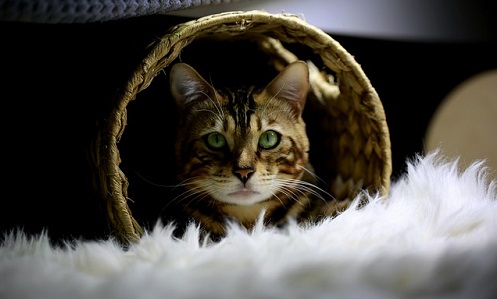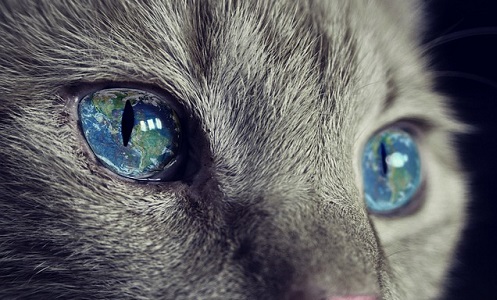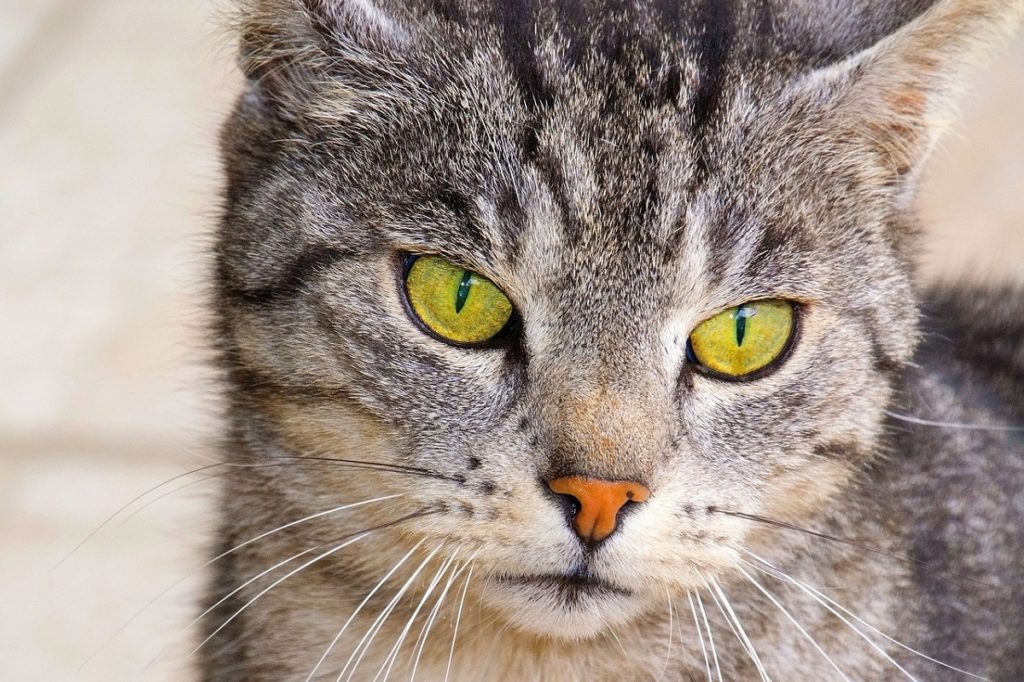How Long Do Cats Live?
Cats can live quite a long span of time. Depending on the breed, the overall health of the cat, and their environment, lifespans can range anywhere from 2 to 20 years and up. One of the oldest known cats according to the Guinness Book of World Records is a cat named Creme Puff that lived until he was 38 years and 3 days old.
Cats can even outlive dogs in many cases, but there are several factors that contribute to your cat’s lifespan. However, despite their fairly long lives, they don’t have nine of them, and your cat will most likely pass away before you will, which is also something you must mentally prepare yourself for before deciding to take one in.
In spite of the probability that your cat will most likely die before you will, in today’s world, they are still living longer than ever. Just like with humans, advances in vet medicine and knowledge of therapy and nutrition have increased the lifespan of cats exponentially. Plus, in today’s world, there are more cats than ever that live indoors as house cats instead of outdoors as wild, feral cats. Additionally, cat owners can do several things to ensure their cat meets or exceeds the average life span, like feeding your pet nutritious cat food, seeking veterinary care when necessary, frequently cleaning their litter box so they don’t develop a preventable disease and keeping your pet at a healthy weight.
Owning a cat as a pet is a definite commitment. Even though they don’t live as long as humans, domestic cats do live a healthy span of years, so it’s important to keep that in mind before you ever bring a cat into your home. There are too many stray cats that are homeless or over-populating pet shelters because of less than responsible pet owners. Sadly, many of those cats end up euthanized.
Average Lifespan of Indoor Cats
Cats that are only allowed outside on a leash or outside in structures that they can’t escape tend to live longer than their outdoor counterparts. It’s estimated that an indoor cat can live as much as three times longer than an outdoor cat.
Why do indoor cats live longer than outdoor cats?
- Indoor cats have been vaccinated
- They are fed and given clean water on a regular basis
- The cats have been spayed or neutered
- They are relatively protected from the dangers of living outside
- They have access to veterinary care and visit the veterinarian when necessary
Some statistics even show that in the last 25 years or so, the number of house cats that are older than 6 years of age has at least doubled. This is amazing considering that after age 7 in human years, cats are considered to be “middle-aged” and after 15 years they are considered to be a senior cat. Yet so many still live well beyond that when properly cared for. This is because cats that live indoors aren’t exposed to the elements, they have fewer risks of parasites and disease, and they have fewer chances of being killed by other animals or hit by an oncoming car. Therefore, they live longer.
Average Lifespan of Outdoor Cats
Unfortunately, cats that live outdoors have a significantly shorter average life expectancy, largely due to unforeseen accidents and traumas that can result in death. For felines that live in the wild, the average cat lifespan is thought to be anywhere from 2 to 16 years. For outdoor cats in cities and rural areas, the average cat is thought to live to only be 3 to 5 years.
Any cat living outdoors faces many potential threats, including hypothermia during very cold winters, rock salts in the winter, wild animals attacking them such as skunks, wolves, coyotes, and more, plus potential trauma and death from being run over by cars, dehydration because of no access to freshwater, or even starving to death because they aren’t getting regular meals. Even feral cats that hunt for their own food may not get enough to eat, especially if they live in areas where potential prey to catch is minimal. If there is no prey to be found, they are forced to scavenge and dig through garbage, which opens them up to all kinds of potential diseases, parasites, and other dangers.
Cats can also be more susceptible to toxins and poisoning when foraging through garbage and trying to hunt for food, they are exposed to more parasites, and of course, don’t have a benevolent human caring for their health needs.
Do Certain Cat Breeds Live Longer?
In some cases, yes, breed does play a factor. However, it’s impossible to be certain how long a cat will live because life simply can’t be predicted. Unforeseen dangers, illness, disease, and trauma can occur at any point in a cat’s life, the same way it can in a human’s life. However, there are some breeds that are “expected” to live longer than others, provided they are safe, fed, and well-cared for.
For instance, Siamese and Manx cats can outlive many other pure and domestic bred cats. Lifestyle, diet, whether or not a cat is on parasite prevention medications, whether they live indoors or out, all play a factor in the lifespan of a cat. Breeds like the American Shorthair, Balinese, Australian Mist, Bombay, and Japanese Bobtail all have quite a long life expectancy.
European Shorthair cats have an average lifespan of 15-22 years! Breeds like the Ragdoll, Russian Blue, Nebelung, Korat, Persian cats, and Snowshoe breeds all have fairly long life expectancies as well.
The Role of Nutrition on the Lifespan of a Cat
Obviously, just like people, the better a cat eats, the healthier they will be. The healthier their bodies are, the longer they have the potential to live. And not just merely live, but enjoy a great quality of life as well. Nutrition plays a big role in your cat’s health and longevity. Though cats are primarily meat-eaters, not all foods are the same. There are many poor-quality foods on the market that are beefed up with fillers and additives, but provide little to no nutritional value for your cat. Still, others may have good, quality ingredients, but your cat may not tolerate all of them well. It can be a bit of trial and error to find food that helps nourish your cat and keep them in tip-top shape, but it’s well worth the effort.
 Milk and dairy is a big no-no for cats. They can’t tolerate lactose and if you do decide to give your cat any kind of “milk” it should be cat milk designed for their bodies. Otherwise, plenty of clean freshwater is really all they need. In fact, access to fresh, clean water is an absolute must if you are feeding your cat dry food. A cat’s body is designed to meet all its water requirements from fresh, raw meat. If they aren’t eating that as part of their diet, they can become dehydrated if they don’t drink enough on their own. Cats seem to have a preference for drinking from moving water sources, so try watering them from a small fountain in your home and see if that increases their water consumption.
Milk and dairy is a big no-no for cats. They can’t tolerate lactose and if you do decide to give your cat any kind of “milk” it should be cat milk designed for their bodies. Otherwise, plenty of clean freshwater is really all they need. In fact, access to fresh, clean water is an absolute must if you are feeding your cat dry food. A cat’s body is designed to meet all its water requirements from fresh, raw meat. If they aren’t eating that as part of their diet, they can become dehydrated if they don’t drink enough on their own. Cats seem to have a preference for drinking from moving water sources, so try watering them from a small fountain in your home and see if that increases their water consumption.
Carbohydrates aren’t great for a cat either and provide very little nutritional value. Carbs can actually be harmful because they can limit how much protein your cat digests, and protein is really what fuels your cat and keeps him healthy. When compared to dogs, cats actually need a lot of protein on average. This is because they have a digestive system that is unique. They are considered to be obligate carnivores, which means they (and their digestive system) is designed exclusively to break down and process meat, and nothing else. On average, your cat should be eating anywhere from 20 grams of protein a day, or more.
Cats also need plenty of vitamins and essential amino acids to function at optimal levels, so make sure you are feeding them foods that have them in the ingredient list or supplement if necessary. Essential amino acids like cysteine, taurine, and methionine are a few amino acids that are important, along with vitamins like A, E, D, C, K, and B. In fact, a lack of taurine can make your cat quite sick and even die if he isn’t getting it in his diet. Thankfully, if you feed your cat complete proteins, you’ll find they will get all of those essential mines from their food. Think fish, meat, chicken, and eggs.
However, carbohydrate ingredients like veggies, grains, and legumes are not complete proteins and will not be able to nourish your cat properly. Even if these carbs do contain some of the essential vitamins and aminos a cat needs, they can’t always properly metabolize and use them, which makes feeding them such foods useless for health and nutrition. You’re merely filling their bellies, not feeding their bodies.
The Role of Vet Care in Your Cat’s Lifespan
With advances today in vet science and medicine, cats are living longer, healthier lives. Your role as a pet owner to help extend your cat’s life as long as possible is to make sure your cat receives the vet care he needs. Regular check-ups can help monitor your cat’s health and catch any kind of chronic or underlying health issues early. Blood tests can detect diseases like hyperthyroidism and kidney disease in cats early so that it can be treated properly.
 Your cat should also be vaccinated against diseases that are known to be problematic, and receive regular wellness exams. Fecal exams can detect intestinal parasites, while dental cleaning and care and proper grooming can keep your cat not only feeling good but looking good too. As cats age, they can suffer from age-related disease and degeneration, like feline arthritis, tumors, respiratory issues, cat cancers, vision and hearing problems like cataracts and disorders in the ear canal, and more. Wellness exams and regular checkups can help you identify these things early and begin treatment and management before they begin to really decrease your cat’s quality of life.
Your cat should also be vaccinated against diseases that are known to be problematic, and receive regular wellness exams. Fecal exams can detect intestinal parasites, while dental cleaning and care and proper grooming can keep your cat not only feeling good but looking good too. As cats age, they can suffer from age-related disease and degeneration, like feline arthritis, tumors, respiratory issues, cat cancers, vision and hearing problems like cataracts and disorders in the ear canal, and more. Wellness exams and regular checkups can help you identify these things early and begin treatment and management before they begin to really decrease your cat’s quality of life.
Making sure your home is stress-free and ensuring your cat gets plenty of exercise is also important for a cat’s longevity. Again, the basics of caring for a cat and increasing a cat’s average lifespan really aren’t that different from what humans do for themselves. But the strides that have been made in pet culture and vet science today, along with the increase of people keeping cats as household pets, has served to make those similarities much more apparent. Eventually, your cat will age out and die, no matter how well he has been cared for. That is simply the cycle of life. Cats age, their bodies slow down, degeneration occurs, and then they die. But they can still live above-average lives and live longer than expected when given all opportunity for health and growth.
Finally, one last aspect of extending your cat’s life as long as possible is quite simply, plenty of love and affection. Just like humans or even dogs, cats thrive in an environment where they receive plenty of affection and attention. They may be finicky creatures and only want you to pet them on their timetable, but when they do come calling, be ready to provide that love. Cats adore being petted and cuddled as long as they’ve initiated it, and they enjoy engaging in playtime and even wrestling sessions with their human. Just be careful of those teeth and claws!
If you commit to making time to give your cat what he needs and provide the proper nutrition and care that their feline bodies require, you will see them not just blossom and thrive, but maybe even live well past the cat lifespan average of their breed. Pet CBD has many potential benefits for older cats who may be slowing down. Be sure to check out our CBD for Cats see if it might be of benefit to your furry family member, it could even be almost like they have nine of those lives after all.
Sources:
- Lutz, Angela. “What Is the Average Lifespan of a Cat?” Catster, 29 Aug. 2018, Accessed 6 Jan 2019. www.catster.com/cat-health-care/average-lifespan-of-a-cat.
- “Caring for Your Senior Feline.” Cat Health, Accessed 6 Jan 2019. www.cathealth.com/cat-care/senior/1247-senior-cat-care.
- “What Is the Average Lifespan of a Cat?” The Spruce Pets, Accessed 6 Jan 2019. www.thesprucepets.com/lifespan-of-cats-552035.
- “How Long Do Cats Live? Ageing and Your Feline.” Vetwest Animal Hospitals, 6 Apr. 2016, Accessed 6 Jan 2019. www.vetwest.com.au/pet-library/how-long-do-cats-live-ageing-and-your-feline.
- Bourne, Sam. “The Average Lifespan of a Cat Breed by Breed Chart.” PetCareRx, Accessed 6 Jan 2019. www.petcarerx.com/article/the-average-lifespan-of-a-cat-breed-by-breed-chart/1698.
- Schultze, Kymythy R. “Your Cat’s Nutritional Needs: The Basics.” Feline Nutrition Foundation, Accessed 6 Jan 2019. www.feline-nutrition.org/nutrition/your-cats-nutritional-needs-the-basics.




